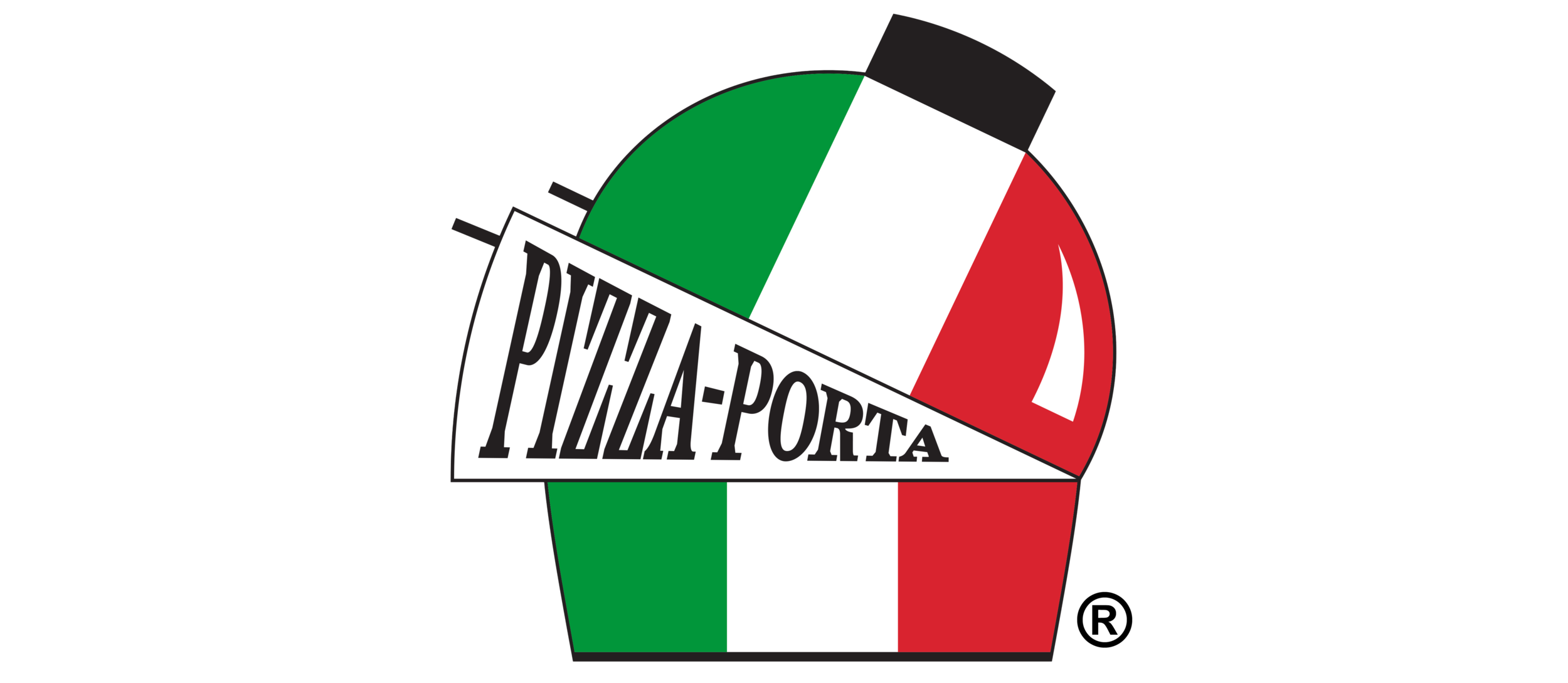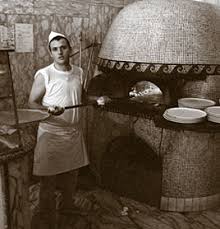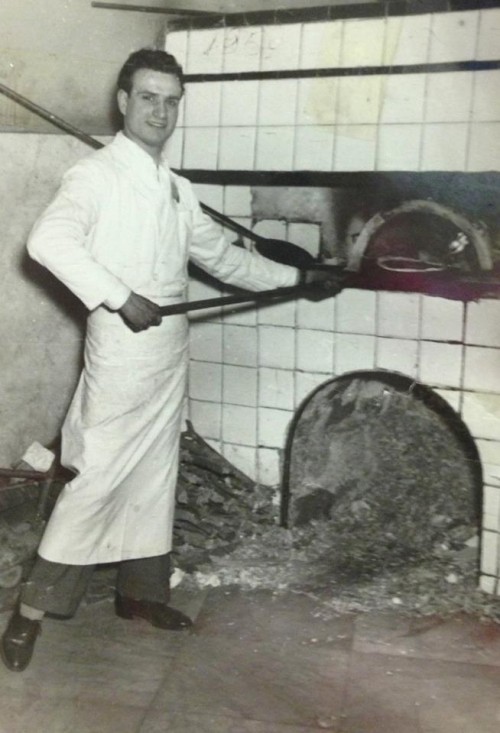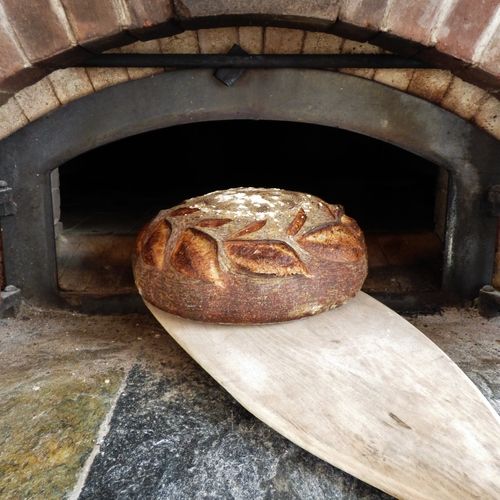Is it a paddle, shovel, spatula, peal, or peel?
So, why use a giant paddle?
You know that tool, the one you’ve always seen the chef at your favorite local pizzeria using—what special function does that paddle serve? The technical term for that handy pizza paddle is a “peel”. People often ask me about the differences between cooking pizza using a peel and simply setting the pizza on a stone with parchment paper or an aluminum screen. In order to understand the important relationship between the peel and the perfect pizza, let’s delve into the history of pizza for a minute.
While this guy isn’t ancient (oh, those shoes!) he is demonstrating the traditional method of cooking pizza using a peel to place the pizza inside a wood-fired oven.
Although we tend to associate pizza primarily with Italy, the history of pizza can be traced back to the Mediterranean and Middle East. During ancient times, the Greeks, Egyptians, Armenians, Israelis, and Babylonians were cooking flatbreads that would be the predecessors to pizza as we know it. By the Middle Ages, the Greek, Roman, and Egyptian peasantry had begun topping these flatbreads with whatever was available to them—chiefly olive oil, garlic, and spices. Thus, these first pizzas resembled what we, today, would call focaccia or flatbread. It was not until the year 1522 that tomatoes arrived in Europe from Peru. Because they were initially suspected to be poisonous, tomatoes were only consumed by the poor. Naturally, they began appearing on flatbreads. With the introduction of the Indian Water Buffalo and the subsequent production of mozzarella cheese, (Mozzarella di bufala, or buffalo Mozzarella) peasant flatbreads increasingly began to resemble our modern concept of pizza. Pizza would not widely popularized until the nineteenth and early twentieth centuries. The most famous pizza was cooked to honor the Queen Consort of Italy, Margherita of Savoy, a Neapolitan pizza maker, created the ‘Margherita pizza’, which contained tomatoes, mozzarella cheese, and basil to represent the colors of the Italian flag.
Throughout this entire evolution of the pizza from simple, flattened dough to the modern pizza, which is essentially an edible plate, cooking tools remained much the same.
This is an ancient wooden peel. It was used to place flatbreads and hearth breads, like the one below, into ancient wood burning ovens. This hearth bread is cooked by slitting the top of a large dough ball and placing it directly on the hot stone floor of an oven without a bread pan. Cooking on the stone floor of the oven is important because it absorbs moisture from the dough giving a burst of steam and then cooking the dough dry for a beautiful charred bottom. You can imagine the challenge of taking a sticky, raw dough ball and placing it right-side-up in a hot oven. The peel has done the job for thousands of years.
4e7aeeffc3014ce6d6fdbe5f4089df60
Here is a beautiful example of a hearth- baked bread being retrieved with a wooden peel, as it would have been thousands of years ago. We can clearly see why the peel has been the obvious tool of choice for pizza makers throughout the ages, as the early derivatives of pizza were simply flatter variations of the more traditional “loaf” in this image. Even today, inside each “real” pizza parlor around the world, there is a chef placing pizzas in an electric, gas, or wood-fired oven using a wooden or metal paddle called a pizza peel (chains like Dominos don't count, of course, as they use a metal conveyor belt).
There are a couple of different common styles of peels that I will highlight here. In each of these styles, different handle lengths are available. Choose the length that suits the depth of your oven. At a minimum, a 20" handle allows you to use two hands to position a pizza in a 600F-900F oven without burning your hands or singeing your eyebrows.
Wooden peel-
We have had great success placing pizzas in our oven with a wooden peel. When pre-treated with flour, the wood absorbs enough moisture that the raw pizza dough does not stick. Adding a tiny bit of cornmeal or semolina on the peel underneath a dough that is dry to the touch, will ensure that the raw pizza will slide off easily onto the stone. Put the stretched-out dough on the peel and then add ingredients, but don't let it linger on the peel for too long or it will stick. A wood peel can be used to retrieve pizza also, but it is a little bit too thick to get under the hardened, cooked crust.
One other pizza trick is "the kiss". Some pros have been known to puff a bit of air under the pizza just before placing it in the oven.
Metal peel -
Pictured are two examples of a metal peel. One is a shovel style with an aluminum handle, the other is a standard wooden handle. These are great for retrieving and turning pizzas in a hot oven. Metal peels can be used for placing raw pizza, but extra precaution must be taken to ensure the bottom of the raw dough is dry or the dough will most certainly stick. These are available in many widths and handle lengths. Check the size that you order because they come in giant sizes that won't even fit in the door of your home oven. A 12" wide peel works well with a standard BGE 14" stone. A 12" peel can be used to retrieve pizzas up to about 16".
Turning peel.
This specialty peel is round so that you can get one edge under the pizza and revolve the pizza in place in a brick oven. Wood ovens tend to have more radiant heat on one side than the other. This peel also has cutouts that scrape the semolina off the bottom while you move the pizza. It is great for retrieving pizza, but not placing, as the raw dough will settle in the slots and stick to the peel.
So if you are going to cook pizza in any oven, you are going to need a large, flat instrument to move the dough from the prep surface to the oven. Whether you use wood or metal doesn't matter. With a little bit of practice, you will master the art of pizza handling. A peel is a simple, elegant, traditional tool designed perfectly for the task.
This guy never even heard of parchment paper, and I bet he made a hundred thousand delicious pizzas!
Photo credits:
http://www.lucianopignataro.it/a/mostra-di-foto-di-pizzaiuoli-napoletani/63622/
http://www.raincollection.com/
https://www.pinterest.com/source/polestarhearth.com
Thank your for reading. If you have comments, please use the comment section. You can subscribe to our occasional blogs by clicking HERE








